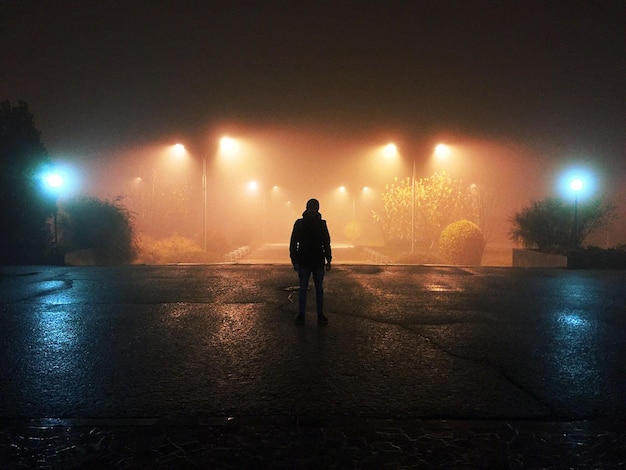The Haunting Harmony: Music’s Role in International Crime Dramas

The role of music in international crime dramas is profound, serving to amplify tension, foreshadow events, and underscore the emotional core of narratives, often transcending cultural boundaries to resonate with global audiences.
International crime dramas captivate audiences with their intricate plots, compelling characters, and atmospheric settings. However, a key element often overlooked is the crucial role of music. The power of soundtracks in creating atmosphere and evoking emotions is undeniable, particularly in the context of these suspenseful narratives. Let’s explore the role of music: how soundtracks enhance the atmosphere in international crime dramas, shaping the viewing experience in profound ways.
Setting the Stage: The Importance of Soundtracks in Crime Dramas
Soundtracks are not merely background noise. They are integral to storytelling, especially in crime dramas. They establish mood, foreshadow danger, and provide commentary on characters’ internal states.
In this genre, where suspense and intrigue are paramount, the atmospheric enhancement provided by carefully chosen music is indispensable.
Creating Tension and Suspense
A well-crafted soundtrack can heighten tension and ramp up suspense, even in scenes that might otherwise seem ordinary. By using dissonant chords, unsettling melodies, or rhythmic pulses, composers can create a sense of unease and anticipation.
This sonic manipulation keeps viewers on the edge of their seats, unsure of what’s lurking around the corner.
- Dissonance and Atonality: Using notes that clash to create unease.
- Rhythmic Pulses: Employing repetitive beats to build tension.
- Sudden Silence: Cutting the music abruptly to amplify shocking moments.
Ultimately, the soundtrack serves as a powerful tool for manipulating the audience’s emotional state, making them feel more invested in the unfolding drama.

Cultural Nuances: Music’s Reflection of International Settings
International crime dramas, by definition, are set in diverse cultural contexts. The soundtracks of these shows often reflect these environments, using music from indigenous instruments, styles of composition and rhythms to immerse viewers in the world of the story.
This not only adds authenticity but also provides commentary on the themes and characters central to the narrative.
Authenticity and Immersion
Incorporating local music styles helps to ground the drama in its setting. Whether it’s the melancholic fado of Portugal or the frenetic rhythms of Brazilian samba, these sounds transport viewers to the story’s location.
This is particularly important for dramas that explore cultural clashes or social issues.
Adding Layers of Meaning
Music can also provide deeper insights into characters’ motivations and the broader social themes being explored. A traditional melody may underscore a character’s sense of identity or a contemporary track might highlight the struggles of a younger generation against old traditions.
- Indigenous Instruments: Using local instruments to add cultural flavor.
- Local Musical Styles: Incorporating regional genres like fado or samba.
- Thematic Resonance: Employing music that reflects specific social issues.
The skillful use of cultural music elevates the storytelling, adding depth and credibility that resonates with a wider audience.
Character Themes: Musical Signatures and Emotional Depth
Just as characters have their own personalities and traits, they can also have their own musical themes. These recurring motifs serve as sonic signatures, connecting viewers to the character’s emotional arc throughout the series.
These themes can range from mournful solos to high energy beats, and often evolve alongside the character’s journey.
Developing Emotional Connections
By associating specific melodies with certain characters, composers deepen the emotional connection between the audience and the narrative. Each time the theme is played, it reinforces the character’s presence and evokes feelings associated with their experiences.
This is particularly effective at highlighting moments of joy or despair.
Symbolic Representation
Character themes are not always literal. They can be symbolic, reflecting deeper aspects of the character’s personality or their role in the story. A minor key melody might underscore a character’s internal conflict, while a triumphant fanfare could signal their eventual triumph.
- Recurring Motifs: Using the same melodies to represent characters.
- Emotional Resonance: Evoking specific feelings through themed music.
- Symbolic Undertones: Reflecting deeper meanings through musical choices.
Composers use these tools to create complex, nuanced musical signatures that enrich the storytelling and amplify the emotional impact of the drama.

Foreshadowing: Using Music to Hint at Future Events
One of the most impactful ways music contributes to crime dramas is through foreshadowing. By subtlety hinting at future events, soundtracks can generate a sense of unease, anticipation, or dread.
This technique requires a delicate touch, as the music must be evocative without giving away key plot points.
Building Anticipation
Subtle musical cues can suggest that something sinister is about to happen. A minor key progression, a discordant note, or a sudden change in tempo can alert viewers to impending danger.
This technique creates a sense of heightened awareness, preparing the audience for the unfolding drama.
Creating False Expectations
Music can also be used to create false expectations, lulling viewers into a sense of security before unleashing a shocking twist. A soothing melody might play as characters walk into a seemingly safe location, only to be ambushed by a hidden threat.
- Subtle Cues: Using minor key progressions to hint at danger.
- Sudden Changes: Altering tempo or instrumentation unexpectedly.
- Misdirection: Lulling viewers into a false sense of security.
Savvy composers use foreshadowing to keep audiences guessing, heightening the emotional stakes and delivering unforgettable moments.
Pacing and Rhythm: Controlling the Flow of the Narrative
The pace and rhythm of a soundtrack can significantly influence how viewers experience a crime drama. Fast-paced music can increase excitement and energy, while slower melodies create a sense of reflection and introspection.
Composers carefully adjust the tempo, instrumentation, and dynamics of the score to match the on-screen action and control the narrative flow.
Enhancing Excitement
High-energy beats, driving rhythms, and intense instrumentation can pump up the excitement during chase scenes, confrontations, and other action-packed moments. The music fuels the adrenaline, making viewers feel more immersed in the unfolding events.
This is particularly effective during scenes designed to thrill and captivate.
Fostering Introspection
Conversely, slower tempos, softer instrumentation, and melancholic melodies can create a sense of introspection during scenes of reflection, mourning, or emotional revelation. The music invites viewers to connect with the characters on a deeper level, fostering empathy and understanding.
- Tempo Manipulation: Adjusting the speed to match the action.
- Instrumentation Choices: Selecting instruments for their emotional effect.
- Dynamic Variation: Altering volume and intensity for impact.
By skillfully manipulating tempo and dynamics, composers can guide the audience’s emotional journey, ensuring that they are fully engaged with the drama’s narrative.
Iconic Soundtracks: Examples of Memorable Musical Scores
Numerous international crime dramas have featured iconic soundtracks that have become as memorable as the shows themselves. These scores not only enhance the atmosphere but also contribute to the drama’s overall legacy.
Examples include the haunting melodies of “The Bridge” or the pulsating electronic beats of “Dark”.
“The Bridge”
The Danish-Swedish series “The Bridge” is known for its haunting and atmospheric score, which perfectly captures the bleak and desolate setting of the Øresund Bridge. The music, composed by Halfdan E and Marie Fisker, features melancholic melodies, sparse instrumentation, and a pervasive sense of unease. This creates an atmosphere of suspense and isolation.
This unsettling feeling underscores the emotional struggles of the characters and the grim reality of the crimes they are investigating.
“Dark”
The German series “Dark” features a pulsating electronic score that reflects the complex and time-bending narrative of the show. Composed by Ben Frost, the music blends electronic elements with classical instrumentation, creating a sense of disorientation and unease. This sonic landscape amplifies the mystery surrounding the town of Winden and the dark secrets buried within.
- “The Bridge”: Bleak melodies capturing a desolate setting.
- “Dark”: Pulsating electronic beats enhancing a complex narrative.
These examples demonstrate the power of music to elevate international crime dramas, making them more immersive, emotional, and memorable.
The Future of Music in International Crime Dramas
Moving forward, the role of music in international crime dramas is set to evolve even further, with composers increasingly experimenting with new technologies, diverse musical styles, and innovative approaches to storytelling.
Artificial intelligence may even play a role in generating customized scores that adapt to individual viewers emotional responses.
Technological Innovation
New technologies, such as AI assistants and virtual instruments, are providing composers with unprecedented tools for crafting immersive and personalized soundtracks. These innovations allow for greater experimentation and flexibility in shaping the audience’s emotional experience.
This opens up new possibilities for creating unique and impactful musical landscapes.
Diversification of Styles
The soundtracks of international crime dramas are becoming increasingly diverse, incorporating elements from various global traditions, blending genres, and challenging traditional notions of what constitutes a “crime drama score”. This trend reflects a growing appreciation for cultural authenticity and a desire to appeal to wider audiences.
- AI Composers: Using artificial intelligence to generate music.
- Global Fusion: Blending diverse musical traditions.
By embracing technological innovation and stylistic diversification, composers are pushing the boundaries of what’s possible, ensuring that music continues to play a vital role in international crime dramas for years to come.
| Key Point | Brief Description |
|---|---|
| 🎵 Atmospheric Enhancement | Music sets the mood, increasing suspense and emotional depth. |
| 🌍 Cultural Reflection | Soundtracks incorporate local music to add authenticity and reflect social themes. |
| 🎭 Character Themes | Recurring melodies create emotional connections and represent character arcs. |
| 🔮 Foreshadowing | Music subtly hints at future events, building anticipation and suspense. |
Frequently Asked Questions
▼
Music enhances the atmosphere, creates tension, reflects cultural settings, and underscores emotional depth, making the viewing experience more immersive and engaging.
▼
By incorporating local instruments, musical styles, and thematic cues, soundtracks immerse viewers in the cultural context of the international crime drama.
▼
Character themes create emotional connections, symbolize deeper character aspects, and enrich the overall storytelling by providing musical signatures for key characters.
▼
Music subtly hints at future events through minor key progressions, sudden tempo changes, and misdirectional melodies, building anticipation and unease among viewers.
▼
Iconic soundtracks like those from “The Bridge” and “Dark” use unique musical styles to enhance the atmosphere, contributing to the drama’s memorability and legacy.
Conclusion
In conclusion, the soundtrack of an international crime drama is far more than just background music. From creating suspense and evoking emotions to reflecting cultural nuances and foreshadowing future events, music plays a vital role in shaping the viewing experience, adding layers of depth and complexity to these captivating narratives.





